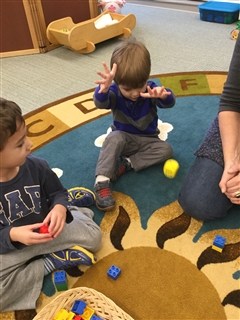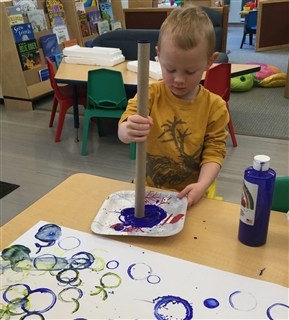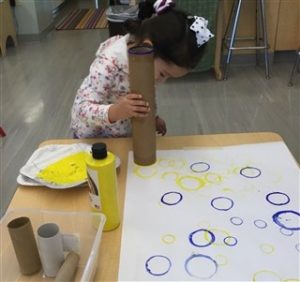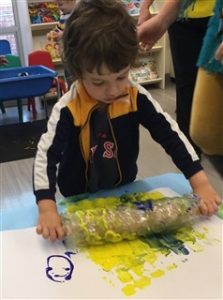By Mildred Cawlfield
“I want to do it by myself” was a new proclamation in the Jones household. Along with learning new self-help skills, their daughter had developed a keen desire for independence. Rebecca had been a joy, quickly learning to talk and willingly agreeing with her parents’ requests. But recently she had discovered a new feeling of power and wanted to make decisions by herself.
Her parents wisely started giving her choices between two alternatives — two pieces of clothing, two breakfast foods or snacks, or two books for story time. They found that she was more willing to follow directions when given some choices.
There were times, however, when they found the need to hold to the rules and expect obedience despite her noisy protests. Yes, she did need to go to bed at the appropriate time after a predetermined routine. She did need to stop her play when it was time to come to the table. And, no, she couldn’t have sweets or get her parents to buy new toys any time she demanded them. Parents meet testing times throughout a child’s upbringing. They must continue to weigh the child’s need for growing independence with the value of teaching obedience. In the past few decades, obedience has seemed to be an outdated virtue, as a popular voice proclaimed the need for “freedom to be you and me.” Many have discovered, however, that freedom for self-fulfillment can become license and prevent the true freedom which comes from obedience to moral and spiritual law.
Children are quick to pick up on whether a request for obedience is one of self-will or of the need for obedience to principle. If parents say, “Do it because I said so,” they are requesting obedience, but they are not making clear the reason for obedience.
The parent might say to her daughter, “This is a ‘hurry-up time.’ Your brother is getting out of school, and he will be looking for us. He’ll wonder where we are if we don’t get there right away.” Then the daughter will learn that the request for obedience is based on her brother’s need and their love for him. If there is still resistance, the parent may need to pick up the child and put her in the car despite protests.
A parent shouldn’t plead with a child or allow stalling tactics while awaiting obedience. After giving a reasonable amount of time for compliance, the parent should take action. Otherwise the child learns that he doesn’t really need to do what is expected until the parent’s voice reaches a certain pitch. Choices may be given, such as, “Would you like to come by yourself, or shall I carry you?” Then the parent will follow through depending on the child’s behavior. There will also be times when the parent can encourage the child to obey by saying, “I know you will come quickly when I call,” and then praising the obedience. Occasionally the parent may count out loud after giving a direction, to allow a little leeway, if he has made the rule clear: “You may have until I count to five to come.” Then, according to response, you could add, “Wow! You came by three.”
A parent can help a child practice responding to directions at a time when strong feelings about obedience or independence are not present. The parent may say, “Let’s play the obedience game. Obedience means to do what you’re told to do right away, lovingly. Let’s see if you know how to be obedient. Put your hands on your head. … Oh, you’re obedient. You did it right away with a smile. Now you can go way into the kitchen. When you hear me call ‘Elsie, Elsie, please come here,’ you will come so fast!” Praise and hugs follow.
I suggest not allowing the child to be the leader in this game, because children must not feel that parents should obey them. The distinction between parent and child must remain clear. You may talk to your child, however, about how you listen to your Father-Mother God and try to obey God’s directions. Give some examples. You can get further practice using puppets, then the child can take turns giving instructions.
Some children need encouragement to exercise their independence. They may seem to be perfectly willing to let parents do everything for them. If that’s the case, you can give them small tasks to do, show them how to do the tasks, and then praise their efforts. For example, “I’m going to put the sock over your foot. See if you can pull it all the way up. . . . Good, you did it!”
It helps for parents to be aware of when they might expect a child to take responsibility for a task. The self-help checklist at the end of this article should help with that if you keep in mind that children don’t all mature at the same time, and some may do some of the tasks sooner, and others later, than the average.
There has been a backlash against early toilet training; and now many parents are waiting too long, until the child becomes determined to keep the old habit of using a diaper for elimination. If you can catch a baby’s regular movements on the potty — a comfortable small seat on the big toilet — after he can sit up well or from 10 months on, it can lead into regular toilet training at around age two when the child is able to stay dry for about 2 hours. You can sit with the child and read stories if it doesn’t distract too much, or leave the child there alone strapped in for a few moments while you stay close by. Make sure the experience is a happy one for the child. Praise if he eliminates on the toilet, but don’t scold if he doesn’t.
To help a two-and-a half-year-old learn to pedal a tricycle, you can stand behind and push the trike a little until one of the child’s feet comes up on a pedal. Then push that leg to help her push the pedal. Push her legs alternately until she is used to that action. For an older child who doesn’t want to learn how to ride a two-wheeler, you can walk alongside holding the bike until she gains the confidence to take off on her own.
Allowing children to do small tasks along with you gives them skills that boost their confidence. One mother had the child put the napkins on the table while she put on the silverware. When the child was older, the mom made placemats with the silverware shapes drawn on them. The child loved setting the table by matching the silverware to the pictures.
Parents often ask if children should be expected always to do a task once they have mastered it. Sometimes, especially when there is a little brother or sister, a child may resist doing a previously learned task such as dressing himself. You can use loving intuition when this occurs. Sometimes reasserting your pleasure in his responsibility and skill will give him the boost needed. At other times you may want to give him the help requested so he knows that being older doesn’t mean losing all contact and help from parents. Then find other appropriate ways to give him attention.
When children are young is the best time to help them begin to establish the qualities of obedience and independence. The right amount of obedience and independence brings joy to children. As they mature, you can let the rope out gradually, allowing more independence as they are obedient. When they become adolescents and feel the need for even more independence, they will be used to obeying you, and you will be able to trust them with greater responsibility.
“There is no excuse for not teaching a child obedience. A parent has no higher work than bringing up his child to reflect good” (Education at The Principia, p. 30).









 Directions
Directions